

HOME

 Mexican
Lights Mexican
Lights
 MARGARITA
FUN MARGARITA
FUN


 SUMMERTIME
/
LUAU LIGHTS SUMMERTIME
/
LUAU LIGHTS



Mexico Vacations?
»»»»»»»»




|
|

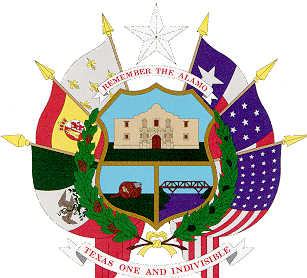
CINCO DE MAYO HISTORY
The 5th of May
is not Mexican Independence Day, but is should be ! And Cinco de Mayo is
not an American holiday, but it should be. Mexico declared its
independence from mother Spain on midnight, the 15th of September, 1810.
And it took 11 years before the first Spanish soldiers were told and
forced to leave Mexico.
So, why Cinco de Mayo? And why
should Americans savor this day as well? Because 4,000 Mexican soldiers
smashed the French and traitor Mexican army of 8,000 at Puebla, Mexico,
100 miles east of Mexico City on the morning of May 5, 1862.
The French had landed in Mexico
(along with Spanish and English troops) five months earlier on the pretext
of collecting Mexican debts from the newly elected government of
democratic President (and Indian) Benito Juarez. The English and Spanish
quickly made deals and left. The French, however, had different ideas.
Under Emperor Napoleon III, who
detested the United States, the French came to stay. They brought a
Hapsburg prince with them to rule the new Mexican empire. His name was
Maximilian; his wife, Carolota. Napoleon's French Army had not been
defeated in 50 years, and it invaded Mexico with the finest modern
equipment and with a newly reconstituted Foreign Legion. The French were
not afraid of anyone, especially since the United States was embroiled in
its own Civil War.
The French Army left the port of
Vera Cruz to attack Mexico City to the west, as the French assumed that
the Mexicans would give up should their capital fall to the enemy -- as
European countries traditionally did.
Under the command of Texas-born
General Zaragosa, (and the cavalry under the command of Colonel Porfirio
Diaz, later to be Mexico's president and dictator), the Mexicans awaited.
Brightly dressed French Dragoons led the enemy columns. The Mexican Army
was less stylish.
General Zaragosa ordered Colonel
Diaz to take his cavalry, the best in the world, out to the French flanks.
In response, the French did a most stupid thing; they sent their cavalry
off to chase Diaz and his men, who proceeded to butcher them. The
remaining French infantrymen charged the Mexican defenders through sloppy
mud from a thunderstorm and through hundreds of head of stampeding cattle
stirred up by Indians armed only with machetes.
When the battle was over, many
French were killed or wounded and their cavalry was being chased by Diaz'
superb horsemen miles away. The Mexicans had won a great victory that kept
Napoleon III from supplying the confederate rebels for another year,
allowing the United States to build the greatest army the world had ever
seen. This grand army smashed the Confederates at Gettysburg just 14
months after the battle of Pueblo, essentially ending the Civil War.
Union forces were then rushed to the
Texas/Mexican border under General Phil Sheridan, who made sure that the
Mexicans got all the weapons and ammunition they needed to expel the
French. American soldiers were discharged with their uniforms and rifles
if they promised to join the Mexican Army to fight the French. The
American Legion of Honor marched in the Victory Parade in Mexico City.
It might be a historical stretch to
credit the survival of the United States to those brave 4,000 Mexicans who
faced an army twice as large in 1862. But who knows?
In gratitude, thousands of Mexicans
crossed the border after Pearl Harbor to join the U.S. Armed Forces. As
recently as the Persian Gulf War, Mexicans flooded American consulates
with phone calls, trying to join up and fight another war for America.
Mexicans, you see,
never forget who their friends are, and neither do Americans. That's why
Cinco de Mayo is such a party -- A party that celebrates freedom and
liberty. There are two ideals which Mexicans and Americans have fought
shoulder to shoulder to protect, ever since the 5th of May, 1862. VIVA! el
CINCO DE MAYO!!






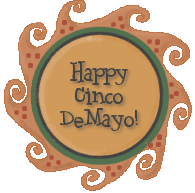
FEATURING NEON LIGHTS
"Ay, ay, ay, ay!canto no llores,
porque candando se alegran
cielito lindo los corazones."
"Sing and do not cry,
because with singing
the heart becomes happy."
-Lyrics from "Cileto Lindo"
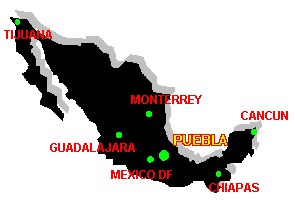 One of more than 365 festivals celebrated by people of Mexican descent,
Cinco de Mayo (the Fifth of May), commemmorates the victory of a group of
untrained soldiers against thousands of well-armed, professional soldiers
at Pueblo,
Mexico, on May 5, 1862. The French defeat must have surprised Napoleon
III, the riler of France, who was attempting to annex Mexico by taking
advantage of the destruction and bankruptcy that existed there. Mexico's
condition at that time was the result of the War of Reform (1858-1860), an
internal political, economic, and religious struggle. At the end of this
civil war, Mexico owed more than $80,000,000 to foreigners. France invaded
Mexico, using debt collection as an excuse. Napoleon III's true
motivation, however, was total control of Mexico and its potential wealth!
One of more than 365 festivals celebrated by people of Mexican descent,
Cinco de Mayo (the Fifth of May), commemmorates the victory of a group of
untrained soldiers against thousands of well-armed, professional soldiers
at Pueblo,
Mexico, on May 5, 1862. The French defeat must have surprised Napoleon
III, the riler of France, who was attempting to annex Mexico by taking
advantage of the destruction and bankruptcy that existed there. Mexico's
condition at that time was the result of the War of Reform (1858-1860), an
internal political, economic, and religious struggle. At the end of this
civil war, Mexico owed more than $80,000,000 to foreigners. France invaded
Mexico, using debt collection as an excuse. Napoleon III's true
motivation, however, was total control of Mexico and its potential wealth!
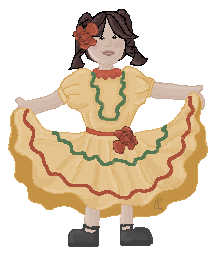
An important patriotic celebration,
the fiesta of Cinco de Mayo, often
includes speeches by government officials, fireworks, and parades. Lively
dances and games, mariachi music, traditional foods, and colorful
decorations provide additional enjoyment for festival participants.
"No Pasaran!"...
"They shall not pass!"
-A Mexican Battle Cry

Mexican Crepe Paper Flowers
To add a colorful touch to your Cinco de Mayo celebration, gather the
kids together and create Mexican crepe paper flowers. They're fun, fast
and easy to make, and will add a festive touch when placed as a series of
small flower arrangements down the center of the table.
Procedure:
Make a tidy stack of six pieces of colored tissue paper or crepe paper.
Cut the stack so that it's 12 inches wide. (It can be any length - 12
inches or more.)
Begin at the top and make 1-inch folds in the entire layer,
accordion-fashion, to form a fan. Secure the center of the fan with a wire
twist tie. Trim the ends with scissors. You can cut an arch shape for a
regular round flower or use fancy scissors for ruffled edges. Bend the fan
in half at the twist tie and separate each layer of tissue carefully,
beginning with the outside and working your way in. Add a stem made of
pipe cleaner or artificial foliage.
Tips: A 12-inch-wide section of tissue paper will make a flower about 9
inches wide. Cut it narrower to make smaller, tighter flowers. Use a few
more layers of tissue for fuller flowers.




Links to Cinco de Mayo

Music of Mexico
One of the most popular forms of Mexican music is the corrido, a
type of folk song. Corridos usually tell a story, often about an incident
of Mexican history.

 Mariachi Music Mariachi Music

Mole Poblano
A traditional dish served on holidays is mole poblano, or broiled
turkey simmered in a highly seasoned sauce that includes chocolate and
chili.

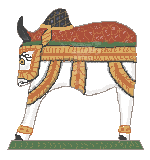
 Mexican Food Mexican Food

Mexico
- Captal: Mexico City
- Area: 761,605 square miles
- Principal River: Rio Grande
- Principal Language: Spanish
- National Holiday: Independence Day, Septemver 16th
- National Anthem: "Himno nacional Mexicano"
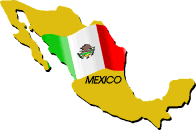 Mexico is a nation located in the southern part
of North America and to the south of the United States. Mexico was the
home of the highly developed ancient Indian civilizations of the Aztecs
and the Mayas. The country was conquered by the Spanish in the early 16th
century and became one of the first lands in the Western Hemisphere to be
colonized by Europeans. Mexico became an independent country in 1821. Mexico is a nation located in the southern part
of North America and to the south of the United States. Mexico was the
home of the highly developed ancient Indian civilizations of the Aztecs
and the Mayas. The country was conquered by the Spanish in the early 16th
century and became one of the first lands in the Western Hemisphere to be
colonized by Europeans. Mexico became an independent country in 1821.

Mexico Links
Learn more about this beautiful country!!

The Mexican Flag


Spanish Language Links

Books for Children
- Argentina, Palacios. Viva Mexico! A Story of Benito Juarez and
Cinco de Mayo. Steck-Vaughn Company.
- Behrens, June. Fiesta!. Children's Press, 1978.
This colorful photo essay shows children enjoying a variety of Cinco
de Mayo activities. The book details the history of the holiday and
describes traditions and customs associated with it.
- Garza, Carmen Lomas. Family Pictures. Children's Book Press,
1990.
This collection of pictures portrays the life of a family living in an
Hispanic community in Texas. The author fondly recalls her childhood
memories of birthday pinantas, making tamales, watching a curandera
cleanse a sick neighbor, and sitting on the rooftop with her sister
gazing at the constellations.

 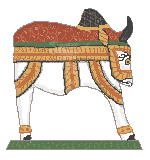

Credits:
Background courtesy of:

The Icon Depot
"Cielito Lindo" Midi courtesy of El
Mariachi
Cursor Trail Script found at Dynamic
Drive

Email to:
admin |
info
| webmaster
South Creek
Nursery of Palmyra
P.O. Box 252 |
Palmyra, New York 14522
Telephone: (315) 597-5330
Fax: (315) 597-6892

 

Copyright © 1996
South Creek Nursery of Palmyra. All rights reserved.
Information in this document is subject to change without notice.
VOYAGE
BACK |

